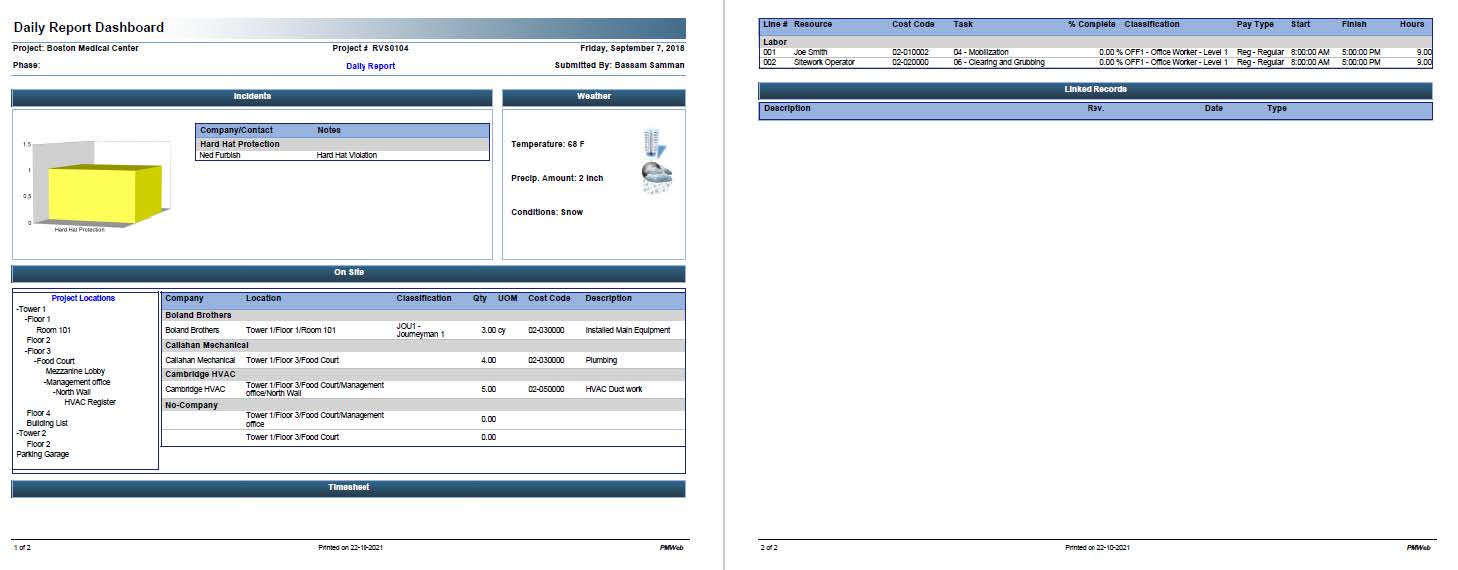One of the great challenges on capital construction projects is how frequently the project schedule needs to be updated. The common practice is to update the project schedule on a weekly basis. Bi-weekly or monthly schedule updates proved to be too long and fail to provide meaningful schedule delay alerts and planning for work to be completed. Few planning engineers even went to the extreme by doing daily schedule updates, although this is more common for the shutdown and turnaround (STO) projects rather than construction projects. Nevertheless, regardless of the schedule update frequency selected, if the updated project schedule activities were not associated with the formal project records and documents that prove the reported actual start, percent complete, actual finish dates, and maybe actual resource hours consumed, then this schedule cannot be considered as the Perfect Updated Schedule. The Perfect Updated Schedule is the schedule that no one can argue does not tell the truth of what has actually happened on the project. It is considered the only approved as-built schedule when there is a claim for disruptions, interferences, delayed approvals, lost productivity, constructive acceleration, etc.
One of the most important projects formal communications that provides the best backup to report the project schedule update is the daily report. The daily report is a must requirement on every capital construction project regardless of its type, size, value, or location. As a minimum, a daily report should detail the project’s weather status, work completed on-site as well as off-site, labor and equipment resources deployed on the project, any safety or other type of events that could have disrupted the work on-site, and pictures of progress achieved. Although the contractor must submit a single daily report to the project owner, nevertheless, the content of this report is usually a compilation of the different daily reports submitted by the site engineers who are usually assigned different sections of the project. Usually, the requirement for the daily report, which is not listed in the General Conditions, is added to the Particular Conditions of the contract agreement for which it must be filled in on a daily basis and signed by both the contractor and engineer.
Therefore, if the information captured in the daily reports becomes the basis for the updated project schedule, then all arguments that relate to what has actually happened on the project are avoided. This also applies to the actual labor and equipment hours consumed on the project. Using a Project Management Information System (PMIS) solution like PMWeb, the daily report module is one of the many business processes that are digitalized. In addition, the PMWeb schedule module helps ensure that the latest updated schedule is available to be associated with the reported progress. By default, the main page of the PMWeb daily report module captures the daily report date, project phase (mobilization, construction, testing, and commissioning, etc.), the work breakdown structure (WBS) level it relates to, who is submitting it and site weather conditions. In addition, it allows capturing a brief of all safety and disruption events that have occurred on that date. For each incident, the incident name, company involved, and description are added. Further, PMWeb allows adding additional fields to capture other information that might be required such as issues. The main page also displays progress and events pictures attached to the daily report.
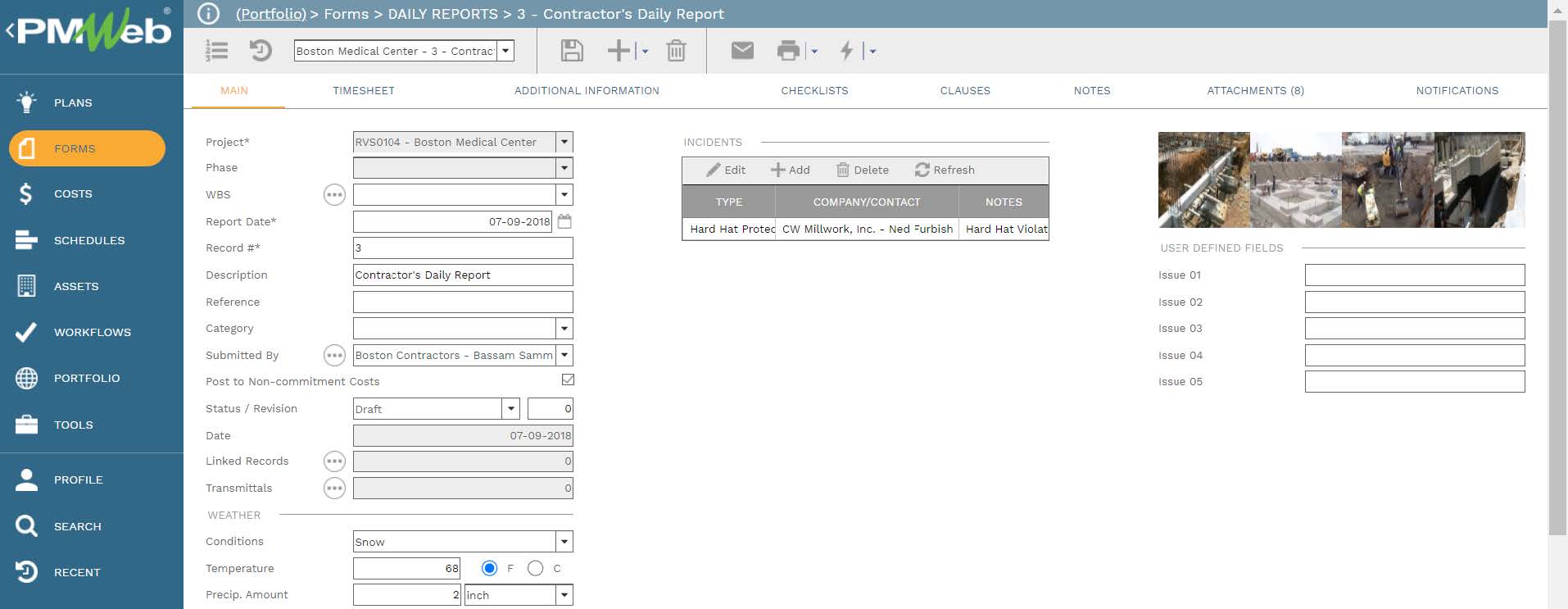
The daily report main page also allows capturing the details of all work in place progressed on that date. It is highly recommended to have the project’s work locations be pre-defined to enable the PMWeb user to drag and drop the location of the work on the list of reported progress. Those locations should also be common to the punch list or snag list module. For each reported progress line item, PMWeb allows attaching progress or events pictures associated with the progress, adding work trade from a predefined list, company (contractor or subcontractor) who performed the work, the quantity of completed work in place or material delivered along with its unit of measure, cost account number or cost breakdown structure (CBS) level it relates to, description of the works, notes, project schedule activity associated with the reported work in place and others.
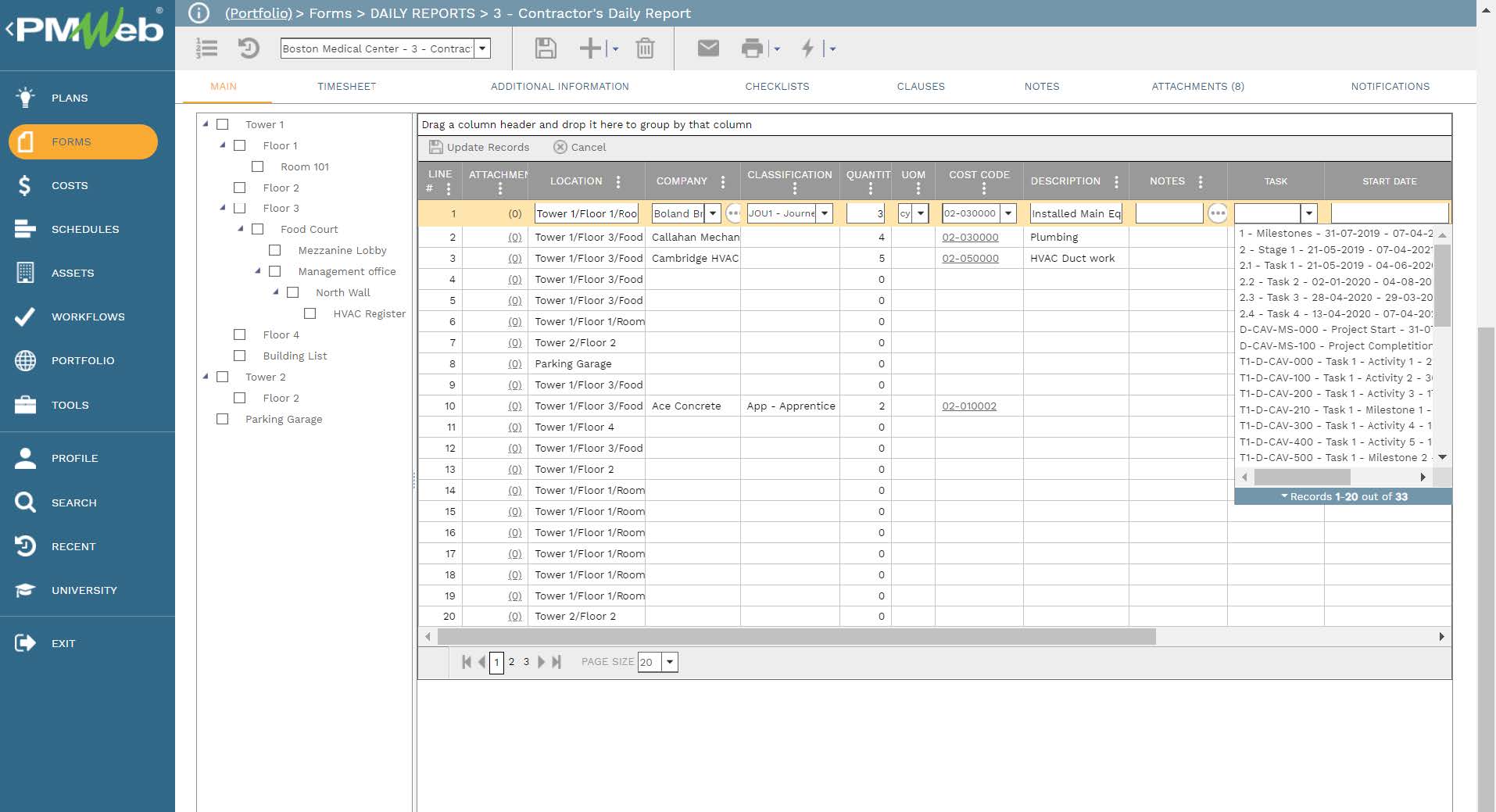
The Daily Report timesheet tab helps capture the details of labor and equipment resources deployed on the project. For labor resources which have the same name as the project schedule resources, PMWeb daily reports allows capturing the resource name, cost account number or cost breakdown structure (CBS) level it relates to, project schedule activity associated with the reported resource hours, task percent complete, resource classification, resource deployment start and finish hours, total hours, pay type for those hours (regular, overtime, weekend, holiday, etc.), notes, work trade, and WBS level the consumed resource hours relate to. For equipment resources, the only difference is for pay types which are operation, standby, or idle. Of course, the payment types for both labor and equipment resources can be defined by the organization.
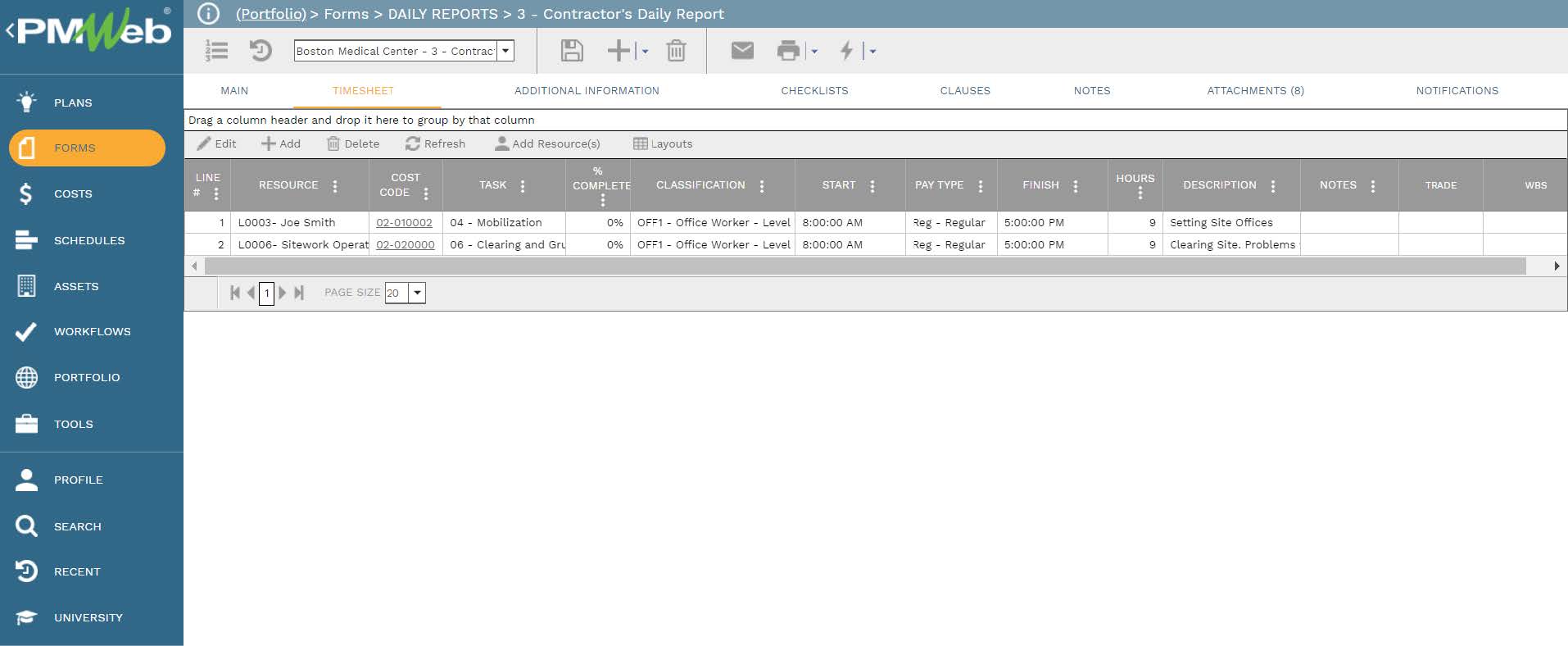
To improve the quality and validity of the reported daily progress, PMWeb daily report module allows including a checklist of all items that the individual submitting the daily report needs to verify and confirm. Those checklists can vary depending on the nature of what is being reported. For example, there could be a different checklist for reporting off-site progress compared to on-site progress. The checklist can be also used to confirm that what was reported is accurate and complete.
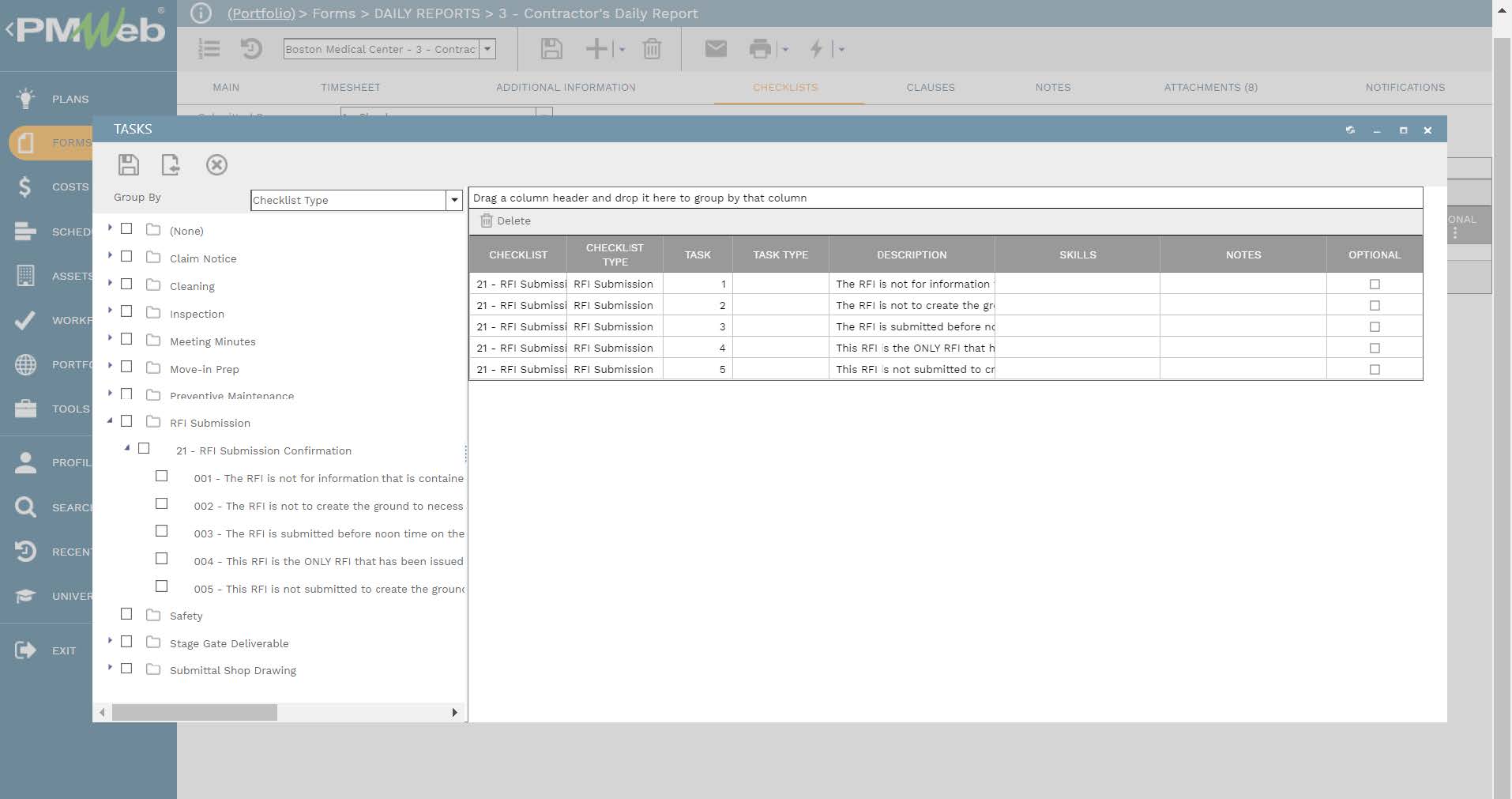
The notes tab of the daily report can be used to capture details of different events that have occurred during the day including the feedback of the individual who has prepared the daily report. There is no limit on the number of notes that can be added to the daily report to ensure that it really describes in detail what happened on that particular day. The note tab allows capturing notes in the rich text which format the text as well as embed pictures.

PMWeb allows attaching all progress and events pictures and other types of documents to each daily report transaction. It is highly recommended to add details to each attached picture or document to better explain to the reader what is being attached and viewed. In addition, links to other relevant transactions or records of other business processes managed in PMWeb can be also added.
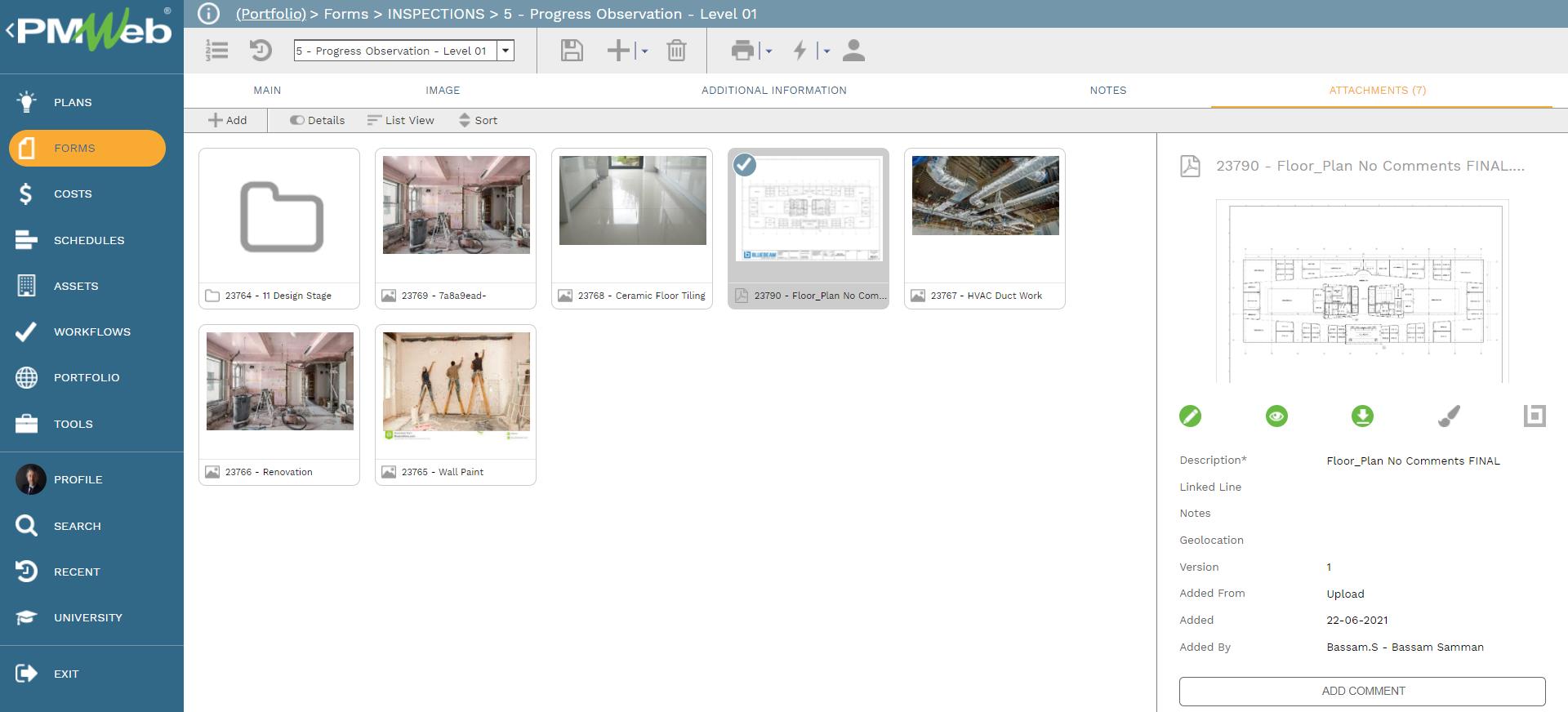
It is highly recommended that all those supportive pictures and documents, regardless of their type or source, get uploaded and stored on the PMWeb document management repository. PMWeb allows creating folders and subfolders to match the physical filing structure used to store hard copies of those documents. Permission rights can be set to those folders to restrict access to only those users who have access to do so. In addition, PMWeb users can subscribe to each folder so they can be notified when new documents are uploaded or downloaded.
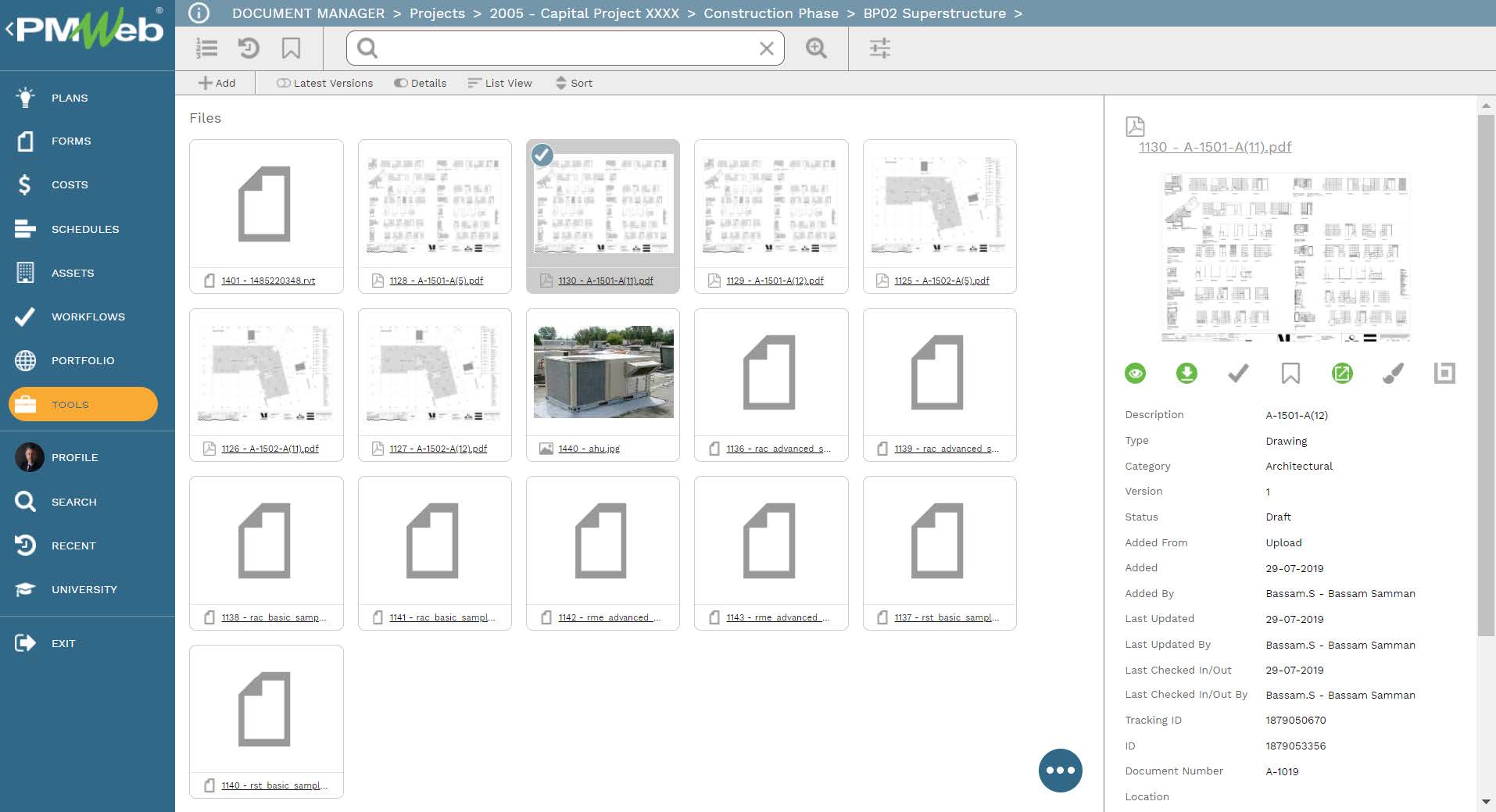
To enforce transparency and accountability in submitting the daily report, a workflow needs to map the submit, review and approve tasks, roles or roles assigned to each task, task duration, task type, and actions available for the task. The workflow tasks details the sequence to be followed in preparing and submitting the daily report which could start by the site engineer or subcontractor if allowed to submit the daily, followed by the planning engineer, then the construction manager, and finally to the contractor’s project manager.
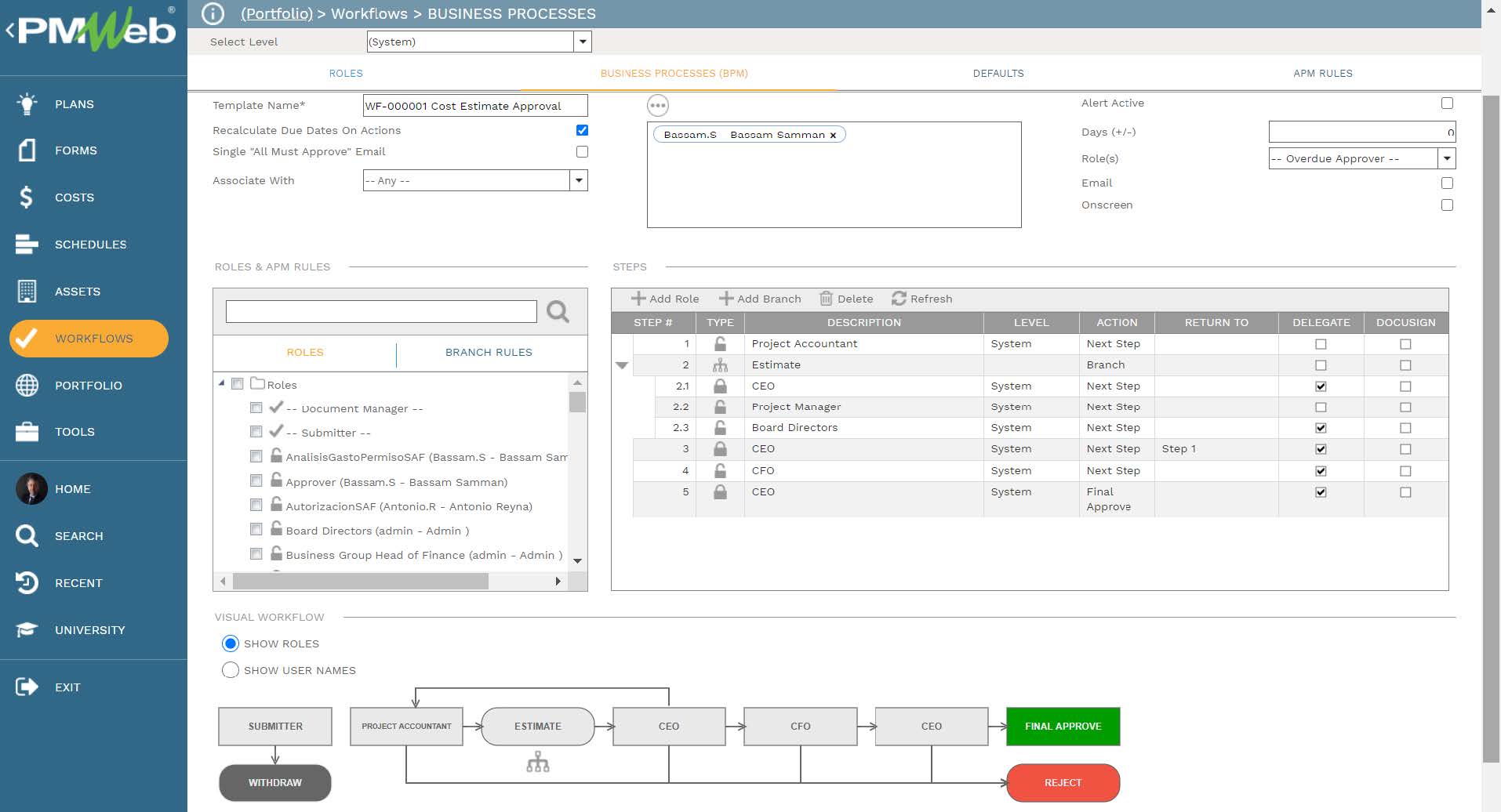
When a daily report transaction is initiated, the workflow tab available on the daily report template captures the planned review and approve workflow tasks for each transaction as well as the actual history of those review and approval tasks. The captured workflow data includes the actual action data and time, done by who, action taken, comments made, and whether team input was requested.
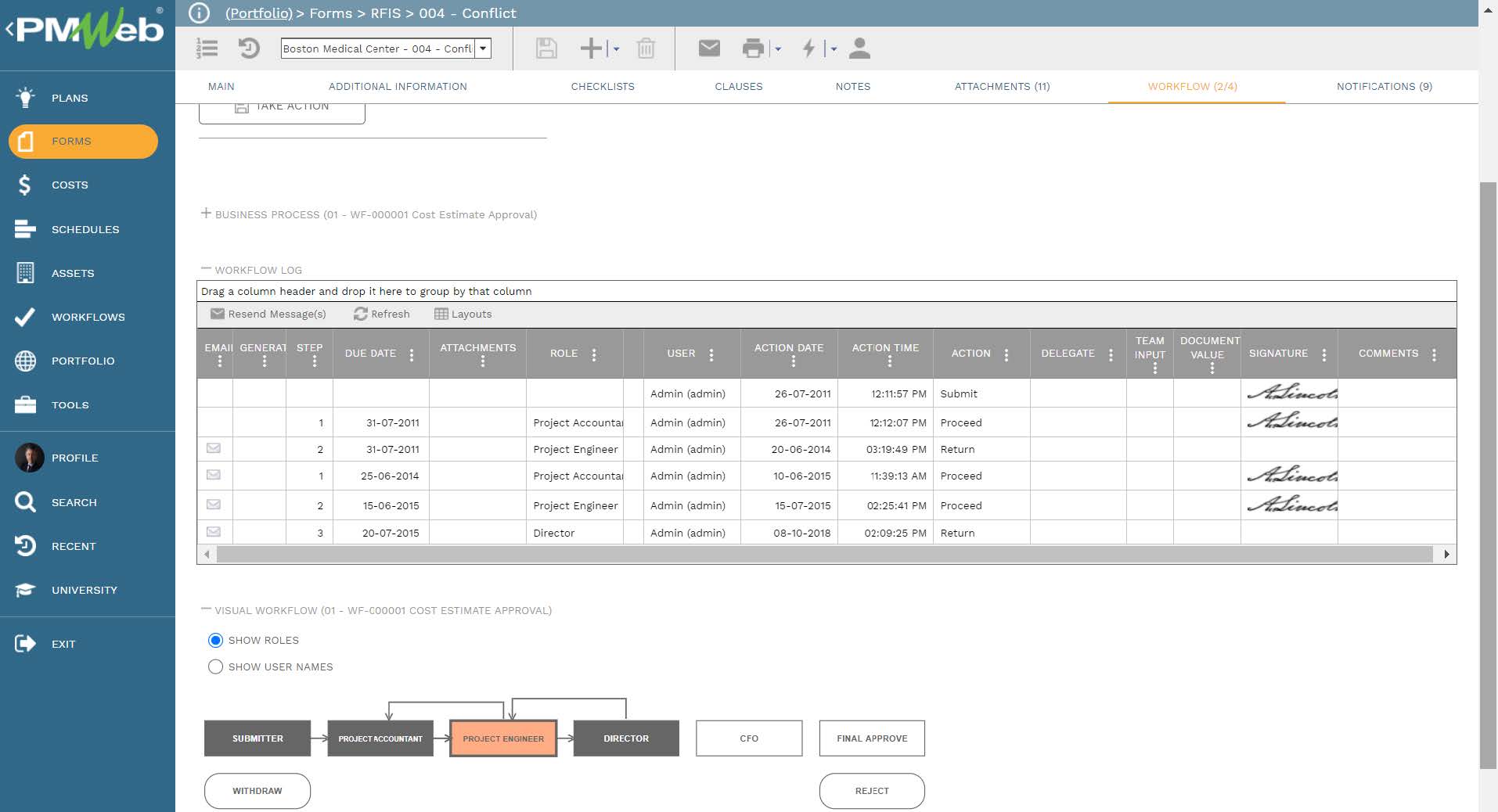
The finally approved daily report submitted by the different site engineers is compiled in a single daily report template so it can be formally submitted to the project owner. The output template is designed to automatically query and extract the data from the daily reports submitted on each specific date to generate the daily report to be formally communicated to the project owner either in hard or soft copy. For the soft copy version, links are automatically created to the attached pictures. Of course, there is also the option to display those on the output daily report form.
